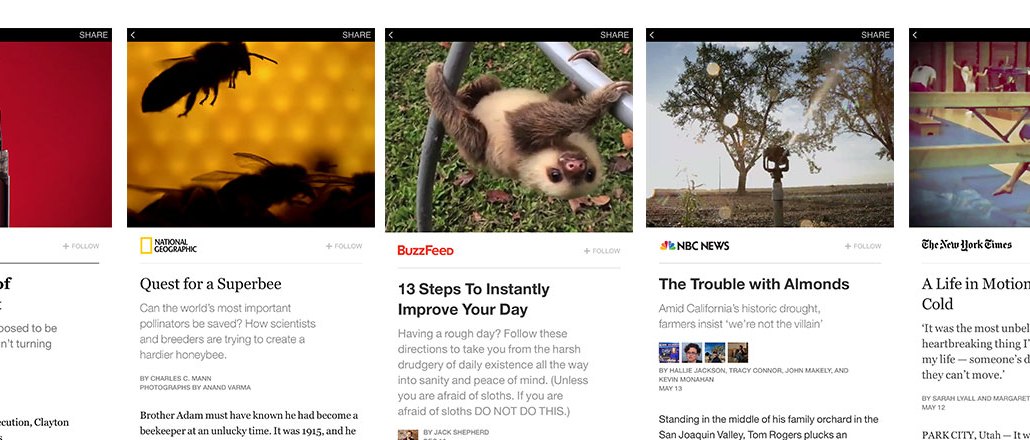Save 50% on a 3-month Digiday+ membership. Ends Dec 5.

Publishers are starting to see the results of Facebook Instant Articles, which launched widely last month, giving them a way to post fast-loading content directly to the social network. They have been treating the new format as an experiment to see what it means for their businesses to give their distribution over to Facebook so fully. They are tweaking the type of content they post as Instant Articles, how much they post and figuring out how they impact performance and monetization.
Games and entertainment media company IGN said Instant Articles reach almost double the number of people on the social network than other posts. PopSugar saw a surge in mobile traffic but a dip in time spent with its content. Meanwhile, Business Insider said Facebook is doing a fine job managing monetization, selling the ads for them. Other publishers sell their own ads, and say that works, too.
“The hope was that we would see an increase in reach and ad inventory, and we saw way more than we were expecting,” said Todd Northcutt, IGN’s vp of product.
IGN is generating 20 percent more ad revenue from Instant Articles, compared to what non-Instant Articles deliver, because of the increase in impressions coming from Facebook, Nortcutt said.
As the initial results trickle in, here is what else publishers said they have found, so far.
Reach
“There was a big question going in,” said Chris George, svp of product marketing at PopSugar. “Would the algorithm weigh Instant Articles more than non-Instant ones? Facebook said that’s not the case, but the consumer is understanding these types of posts are a better experience, and are more likely to click.”
So while Facebook claims not to give an artificial boost to publishers using Instant Articles, more people wind up seeing the posts because they get more clicks, which gives them a higher ranking to show up in more people’s feeds.
Ad position: web_incontent_pos1
IGN shared a week’s worth of data that showed the reach of Instant Articles versus non-Instant Articles. Reach was nearly double: Instant posts reached on average 12 percent of the publisher’s total audience of more than 3.5 million Facebook fans, while non-Instant reached an average of 7 percent of fans.
Engagement
This is where it gets tricky. PopSugar, for instance, puts a lot of stock in driving readers to its website, where it tries to keep them engaged for as long as possible. PopSugar said its mobile traffic is up 36 percent since it joined the program in April, because the site is able to include Instant traffic as if it were a website visit. ComScore does the third-party measuring for publishers to verify the traffic numbers for them and advertisers.
Even though traffic is up, PopSugar said time spent is lower in the Instant Articles by half compared to the average session of a reader visiting the website. “With Instant Articles, by their very nature, the format doesn’t see the same level of engagement,” George said.
PopSugar said it is experimenting with different types of media — more than simple articles — like polls, recipes and other formats to get Instant Article readers to spend as much time as they do on the website.
Content
Publishers are still working out the formula of what type content works best as Instant Articles — links, photo galleries, polls, and other types of media — and how much of it to post.
Ad position: web_incontent_pos2
“We are doing articles only, no photo galleries, slideshows, video. We’re focusing on the simplest, most basic story type,” said Julie Hansen, COO of Business Insider.
Business Insider is posting about 10 percent of its articles as Instant Articles, meanwhile other publishers like The Washington Post have been posting every article in that format.
Monetization
Facebook has given publishers two options to monetize: The publisher can sell the ad units in the Instant Articles, and bundle the traffic with its own website, because of comScore’s ability to measure the visits on Facebook. Or publishers can allow Facebook to sell the inventory through its own ad network.
“We’re filling with our own ads, treating this new inventory as part of our cross-screen ‘All IGN’ inventory,” IGN’s Northcutt said. “Since that was our strategy going in, this is equivalent to organic growth on mobile for us. The ability to measure audience here via comScore was a brilliant move on Facebook’s part, since it allows us to capture this audience there, too.”
Business Insider is taking the other route, letting Facebook fill the ad slots, and it is seeing the same level of monetization from Instant Articles as it gets on its websites.
Business Insider’s own advertisers don’t appear to be clamoring for space in Instant Articles, anyway, Hansen said. “We haven’t seen any particular demand from our own advertisers; there isn’t any resistance either, but we’ve relied on Facebook to monetize, and they’ve done a nice job,” Hansen said.
More in Media

What publishers are wishing for this holiday season: End AI scraping and determine AI-powered audience value
Publishers want a fair, structured, regulated AI environment and they also want to define what the next decade of audience metrics looks like.

Digiday+ Research Subscription Index 2025: Subscription strategies from Bloomberg, The New York Times, Vox and others
Digiday’s third annual Subscription Index examines and measures publishers’ subscription strategies to identify common approaches and key tactics among Bloomberg, The New York Times, Vox and others.

From lawsuits to lobbying: How publishers are fighting AI
We may be closing out 2025, but publishers aren’t retreating from the battle of AI search — some are escalating it, and they expect the fight to stretch deep into 2026.
Ad position: web_bfu